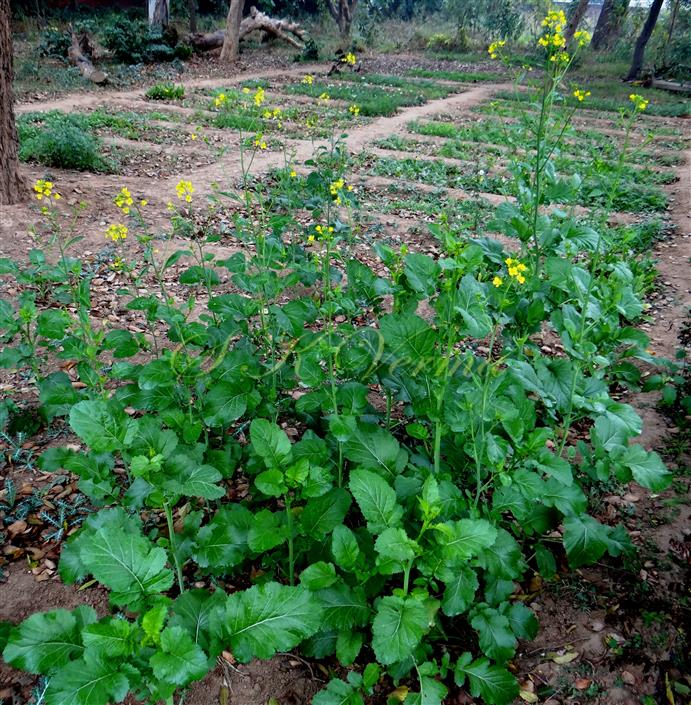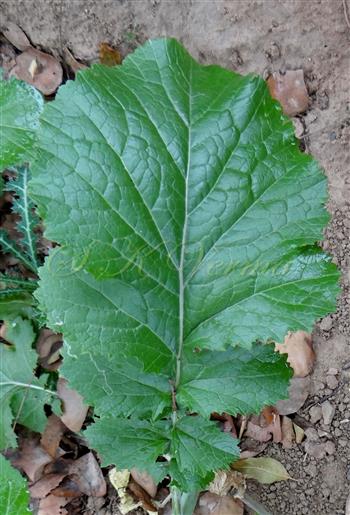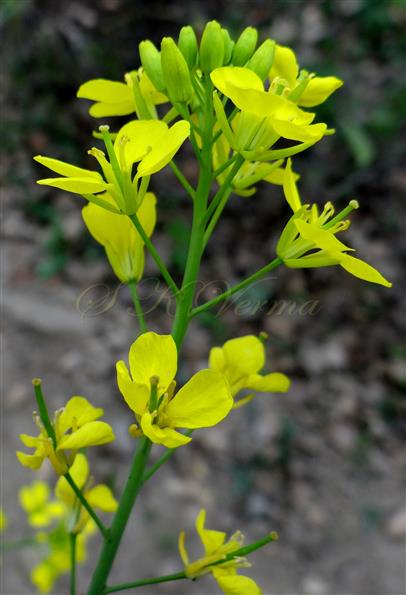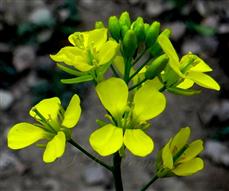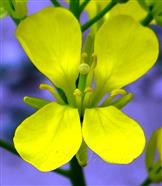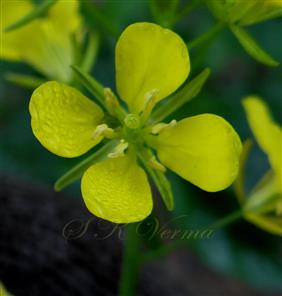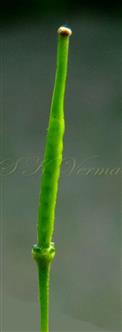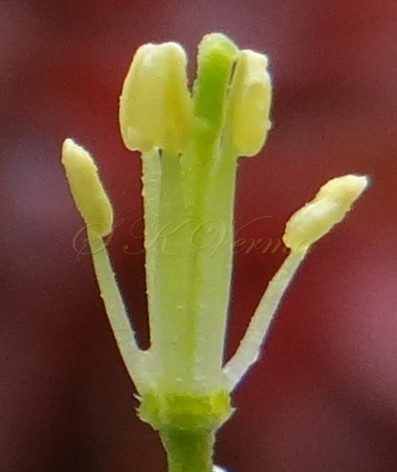Brassica rapa
Brassica rapa
L., Sp. Pl. 2: 666. 1753; Brassica campestris subsp. rapa Hook. f. & T. Anderson in Hook. f., Fl. Britt. Ind. 1: 156. 1872; Fl. Pak. @ eFloras.org; FNA @ eFloras.org 7: 423; Fl. China @ eFloras.org 8: 19.
Annual or biennial; roots fleshy or slender, glabrous or sparsely hairy. Stems unbranched or branched distally, up to 100 cm long. Basal leaves: up to 17 cm long; blade+/- lyrate- pinnatifid to pinnate to pinnatisect, up to 60 cm x 20 cm, margin sinuate-dentate, 2-6 lobes on each side; terminal lobe large, oblong-obovate, obtuse, blade surfaces setose. Middle and distal Cauline leaves sessile; base auriculate to amplexicaul, margin subentire, glaucous and glabrous. Inflorescence corymbose raceme, (not paniculate) with open flowers overtopping or equal to buds. Fruiting pedicels ascending to spreading, 5-30 mm long. Sepals 4, free, 3-8 mm x 1.5-2 mm, patent. Petals 4, free, deep yellow to yellow; limb obovate, 6-10(-13) mm x 2.5-7 mm, apex rounded; claw 3-7 mm. Stamens 6, tetradynamous, filaments 4-7 mm; anthers 1.5-2 mm. Fruits ascending to somewhat spreading, torulose (constricted) terete, 3.5- 11cm x 2-5 mm; valvular segment with 8-15 seeds per locule, 1.3-7.5 cm; terminal segment seedless, 8-22 mm. Valves with a single prominent midvein. Seeds black, brown or reddish, 1-1.2 mm in diameter, smooth.
Key to Subspecies
1. Roots tuberous ....................................... B. rapa subsp. rapa (Turnip)
+ Roots simple, slender ...............................B. rapa subsp. campestris (Mustard)
Brassica rapa subsp. campestris
Brassica rapa subsp. campestris
(L.) Clapham, Fl. Brit. Isles. ed. 2: 124. 1962; B. campestris L., Sp. Pl. 66. 1753; Hook. f. & T. Anderson, Fl. Brit. Ind. 1: 156. 1875; B. rapa var. campestris (L.) Peterm., Fl. Lips. 491. 1838.
Herbs, annual, simple or branched, 30-100 cm high, glabrous or hispid. Basal leaves pinnatifid or more or less so, often auricled, petioled; upper leaves oblong or lanceolate. Flowers yellow. Siliquae up to 10.5 cm long. Seeds ca. 1.5 mm in diameter.
Common Names: Mustard, Sarson
